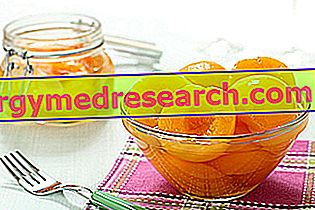Definition
The hen is a terrestrial animal, a bird belonging to the genus Gallus, Species gallus, Subspecies domesticus ; the binomial nomenclature of the hen is therefore Gallus gallus domesticus L.

The old hen, also called broth, can be identified as "chicken"; however, it is distinguished from the latter by the type of feeding offered on the farm (the chicken comes from farms from INGRASSO, while the hen comes from those for the production of eggs). It is no coincidence that the hen properly so called is also a laying hen . In practice, the hen is raised mainly for the production of eggs even if, at the end of its productivity, it is destined for slaughter.
Most laying hens are raised in battery (over ¾ of the total); on the contrary, only 10-20% grow in rural farms; the remaining portion is affected by alternative farms.
Hen: Eggs and Meat
Chicken eggs are the most consumed worldwide. These are extremely nutritious foods, which provide a moderate energy intake, proteins with a high biological value and a vitamin and salt complex that is, to say the least, excellent; only flaw, the high content of cholesterol in the yolk.
An average chicken egg weighs about 60g and, as part of a balanced diet, it is generally recommended to consume about 3 eggs a week.
| Composition for 100g of Hen | ||||||||||||||||||||||||||||||||||||||||||||||||||||||||||||||||||||||||||||||||||||||||||||||||||||||||||||||||||||||||||||||||||||||||||||
 | ||||||||||||||||||||||||||||||||||||||||||||||||||||||||||||||||||||||||||||||||||||||||||||||||||||||||||||||||||||||||||||||||||||||||||||
Nutritional values (per 100 g of edible portion)
| ||||||||||||||||||||||||||||||||||||||||||||||||||||||||||||||||||||||||||||||||||||||||||||||||||||||||||||||||||||||||||||||||||||||||||||
Compared to eggs, the consumption of hen meat (as opposed to chicken) is decidedly less widespread. Due to its organoleptic and gustatory characteristics, hen meat lends itself essentially to the production of boiled meat (if still young) and broth (if it exceeds one year of age).
Chicken meat is leaner than chicken and has both skin and subcutaneous fat of a more intense yellow; the visceral adipose tissue is always white. On the other hand, hen meat has more or less the same chemical and physical characteristics as those referred to chicken meat, although in theory this depends above all on the type of "hen" (especially from age and nutritional status ); a medium hen weighs about 1.5kg but there are older specimens that can reach 3.5kg.
Gastronomic aspects of the Hen
As we have said, the hen can be used both for its eggs and for its meat. While the eggs represent a food of ample consumption and the relative cooking techniques are widespread, the hen is among those "traditional" products that have nothing to do with contemporary foods. This characteristic is attributable to the relative organoleptic and gustatory properties which, as we have anticipated, restrict its use to the production of broth and / or boiled meat; both of these preparations require VERY time, which is why they are gradually being abandoned. I recall that for the production of a good broth it is necessary to immerse the meat in cold water, while for the cooking of boiled meat a temperature of the liquid close to boiling is required. Also in this case, for further details I suggest to consult the dedicated articles: Boiled meat and Broth.
Nutritional Features
For all that concerns eggs, I invite readers to consult the article: Egg - egg yolk and egg white; on the contrary, the meat of the hen will be examined below.
The meat of the hen changes considerably in composition depending on the age of slaughter. As can be seen from the table to the side, the lipid supply is of medium entity and refers to the balance of the entire hen. The fatty acids contained in the triglycerides are predominantly monounsaturated, although the saturated content is not to be neglected; the polyunsaturates are rather contained and the cholesterol figures in average quantities. The hen does not contain fiber and the glycogen is identifiable only in small traces. Proteins cover most of the energetic role and are of high biological value. Among the mineral salts there are excellent concentrations of potassium; good iron intake too. As for the vitamins, those of the B group stand out, especially the Niacin (vit. PP).



